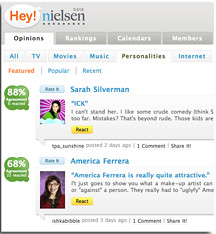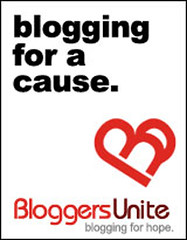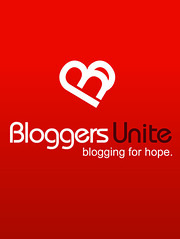Hey! Nielsen, a new opinion-driven social network from the leading provider of television audience measurement and advertising information services worldwide, is in public beta. Beta is the operative word.
It’s not The Nielsen Company’s first foray into the Internet. It also has BlogPulse, which is an automated trend discovery system for blogs and powered by Nielsen BuzzMetrics. BlogPulse is not the most used Internet measure, but its trending tools are well conceived.
BlogPulse is the reason I had high hopes for Hey! Nielsen despite fan efforts to change the failing rating system. Instead, I’m not sure what to think.
“Hey! Nielsen is more than just a new idea in opinions and social networking: it's a way for you to influence the TV and movies you watch, the music you listen to, and more ... all while making a name for yourself,” says the Hey! Nielsen page.
Buzz Breakdown
Wow. Someone crisscrossed the objectives. How can you accurately gauge fan buzz on the Internet if you are dangling “fame” in front of the people scoring the system? It adds the same kind of superficial buzz measures that are overshadowing Web metrics. And, it all takes place in a walled garden approach that people like Joseph Smarr want to rip down via Plaxo. (The interview by Scoble convinced me to check Plaxo out.)
Did I mention “beta” is the operative word?
It took less than a day for fans to see what Hey! Nielsen really is — a social network that asks “users” (a word that is well past its prime) to pile into the school gymnasium and have a shouting match. Those with the biggest lungs win. And those with the most outrageous comments get the most attention.
Jericho Fans
My hat is off to Jericho fans for dominating the Hey! Nielsen site and making Jericho number one on Monday and Tuesday before all those Supernatural fans showed up and Jericho settled into second place. Firefly is third. Heroes finished fourth. Veronica Mars, which I wrote about last week, is holding its own.
Beta Pains
But the most telling result in television is that Facebook was tied with Ugly Betty for eleventh place until today. (I didn’t even know Facebook was on a network; I better pay more attention.) Linkedin, in television rankings, still holds at 60; and MySpace is ranked 40. Again, that’s in television; never mind Internet rankings.
Worse, Supernatural and Jericho fans were recently accused of spamming the system. Huh? It’s not the fans; it’s the system.
Hey! Nielsen also tries to influence the influencers on their blog with Steve Ciabattoni writing: "Thankfully, those fervent fans are also commenting and giving opinions on more than just one topic while they're here, which is exactly what we want: Deep profiles, and a deeper sense of who's out there -- and from your posts, we can tell that some of you are really out there!"
Did I mention “beta” is the operative word?
Hey! Conclusions
The Hey! Nielsen team has some pretty bright people working on it. So perhaps from beta testing a real measure of fandom might emerge from the mob rules chaos that currently exists. As it stands, not much can be determined. Hey! Nielsen even ranks second in Internet rankings (on its own system).
I was also surprised to find Copywrite, Ink. in the mix (although I might tank after this write up). Thanks for the faith!
So here’s the bottom line from an end consumer (because I am not a tech guy, which can sometimes be a good thing). Hey! Nielsen has a robust, extremely fluid interface with tremendous potential. Where it misses is in providing any sense of real measure beyond mob rules buzz. The widgets are pretty solid.
Personally, I think Hey! Nielsen would have been better off setting the topics up, linking in media critic and blogger reviews to those subjects (with the reviews subject to review), weaving in some of its BlogPulse trending technologies, and asking people to vote and comment on that. It would have gamed it a bit, but not nearly as much as it is being gamed now.
If any fan groups deserve some extra kudos, it’s Jericho and Firefly. I’m amazed that both fan bases, with one show in stasis and another long ended, have quickly rallied and dominate the site. If we’re talking influence, there it is.

It’s not The Nielsen Company’s first foray into the Internet. It also has BlogPulse, which is an automated trend discovery system for blogs and powered by Nielsen BuzzMetrics. BlogPulse is not the most used Internet measure, but its trending tools are well conceived.
BlogPulse is the reason I had high hopes for Hey! Nielsen despite fan efforts to change the failing rating system. Instead, I’m not sure what to think.
“Hey! Nielsen is more than just a new idea in opinions and social networking: it's a way for you to influence the TV and movies you watch, the music you listen to, and more ... all while making a name for yourself,” says the Hey! Nielsen page.
Buzz Breakdown
Wow. Someone crisscrossed the objectives. How can you accurately gauge fan buzz on the Internet if you are dangling “fame” in front of the people scoring the system? It adds the same kind of superficial buzz measures that are overshadowing Web metrics. And, it all takes place in a walled garden approach that people like Joseph Smarr want to rip down via Plaxo. (The interview by Scoble convinced me to check Plaxo out.)
Did I mention “beta” is the operative word?
It took less than a day for fans to see what Hey! Nielsen really is — a social network that asks “users” (a word that is well past its prime) to pile into the school gymnasium and have a shouting match. Those with the biggest lungs win. And those with the most outrageous comments get the most attention.
Jericho Fans
My hat is off to Jericho fans for dominating the Hey! Nielsen site and making Jericho number one on Monday and Tuesday before all those Supernatural fans showed up and Jericho settled into second place. Firefly is third. Heroes finished fourth. Veronica Mars, which I wrote about last week, is holding its own.
Beta Pains
But the most telling result in television is that Facebook was tied with Ugly Betty for eleventh place until today. (I didn’t even know Facebook was on a network; I better pay more attention.) Linkedin, in television rankings, still holds at 60; and MySpace is ranked 40. Again, that’s in television; never mind Internet rankings.
Worse, Supernatural and Jericho fans were recently accused of spamming the system. Huh? It’s not the fans; it’s the system.
Hey! Nielsen also tries to influence the influencers on their blog with Steve Ciabattoni writing: "Thankfully, those fervent fans are also commenting and giving opinions on more than just one topic while they're here, which is exactly what we want: Deep profiles, and a deeper sense of who's out there -- and from your posts, we can tell that some of you are really out there!"
Did I mention “beta” is the operative word?
Hey! Conclusions
The Hey! Nielsen team has some pretty bright people working on it. So perhaps from beta testing a real measure of fandom might emerge from the mob rules chaos that currently exists. As it stands, not much can be determined. Hey! Nielsen even ranks second in Internet rankings (on its own system).
I was also surprised to find Copywrite, Ink. in the mix (although I might tank after this write up). Thanks for the faith!
So here’s the bottom line from an end consumer (because I am not a tech guy, which can sometimes be a good thing). Hey! Nielsen has a robust, extremely fluid interface with tremendous potential. Where it misses is in providing any sense of real measure beyond mob rules buzz. The widgets are pretty solid.
Personally, I think Hey! Nielsen would have been better off setting the topics up, linking in media critic and blogger reviews to those subjects (with the reviews subject to review), weaving in some of its BlogPulse trending technologies, and asking people to vote and comment on that. It would have gamed it a bit, but not nearly as much as it is being gamed now.
If any fan groups deserve some extra kudos, it’s Jericho and Firefly. I’m amazed that both fan bases, with one show in stasis and another long ended, have quickly rallied and dominate the site. If we’re talking influence, there it is.
































